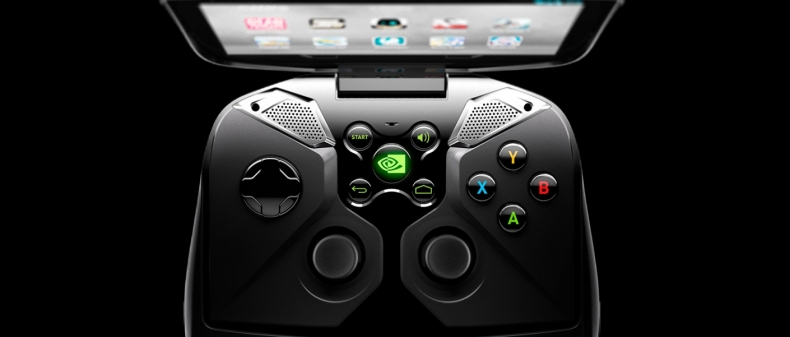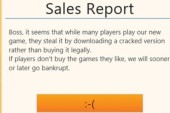
The game industry is in a very big period of change. Console sales are down, PC gaming is once again popular, but it’s mobile and social games that are really King. The definition of what a game is, and who plays them, and why people play them is rapidly changing as more diverse groups of people play them and gaming becomes less of a niche activity. There are many enterprising companies who look to change the way we play with new devices that can take people away from their PCs, consoles, or phones.
OUYA console
Small But Mighty
The OUYA console created a sensation last year when a Kickstarter was launched to fund the creation of this tiny, independent console. It’s a $99, open source, Android-based console — that means that, like on PC, players are encouraged to hack the console, meaning ‘mods’ will be possible on a console, and with an Android operating system, it’s able to support many Android applications. It’s had a lot of support from the industry — both AAA developers (Square Enix, NAMCO Bandai) and indie developers are excited to develop for the device. Even better, they’ve partnered with NVIDIA to bring comparable graphics to that of pre-existing consoles, so games will look just as good on the OUYA as it does on the XBOX.
The GameStick has already encountered a naming snafu that resulted in having to pull out of funding (for now). It’s also an open-source Android device, like the OUYA. Unlike OUYA, it’s completely portable and wireless. It’s basically a USB key that connects into a controller pad. It’s also priced lower than the OUYA, at $79. However, it was just announced, so what games will be available is kind of up in the air — right now, they only have access to about 200 Android games, with no word on whether it will or even can support graphics-heavy AAA titles. It’s also not clear how it connects to the television (I assume wirelessly in some way, but it’s not really explained), which could also wind up being rife with problems down the line.
NVIDIA’S Project Shield handheld
Age of Valve
Valve, the company behind PC gaming platform Steam, have several projects in the works that will change how people play video games. The first, Big Picture Mode, is already out of beta and allows you to take the Steam platform to your TV and play all your favourite PC games. It allows you to connect via your current computer and HDMI cable, or dedicate a separate PC and connect to Steam to play. Set up is designed to be practically painless, and it also allows you to surf the web and chat with your Steam friends.
The company also confirmed at CES that they are in fact developing hardware too, the long rumoured Steam Box. However, it’s a very informal announcement, and they are in the very early stage of development. What Valve is doing right now is testing all sorts of ideas, like gaming on a Linux-based device and augmented and virtual reality hardware. They’re also interested in improving motion sensor controls, and Valve engineers are working on motion controls with biometric data and game tracking. They’re also considering making the hardware able to double as a server. It really sounds like they’re looking to make a gaming console out of science fiction. How much of this will actually be possible will be interesting to see.
Valve is also backing two new devices. The first, NVIDIA’s Project Shield, came almost completely out of left field at this year’s Consumer Electronics show. There had been almost no advanced press on the device, so it was a pretty big surprise when it was announced. A portable Android gaming system, similar in design to a traditional handheld, with a 720 OLED display that attaches to a controller and folds into a clamshell. It also features the mega powerful Tegra 4 processor, and can support both Steam AND Android games. This means that you’ll have portable access to your entire Steam library, as well as any Android-only titles. But things like OLED screens and top of the line processors ain’t cheap. It’s rumoured that Project Shield could cost as much as $399 and, when even a traditional console or handheld goes for much less, casual gamers simply aren’t going to be interested.
Valve is also backing Xi3 Corporation’s Piston console. It’s essentially a modular computer system that can fit in your palm and can connect to your television, and it supports both Steam and Big Picture Mode. It looks a lot like A Steam-powered OUYA. Details on this one are also scarce at the moment, but you can check out a video on it here.
Razer’s Edge gaming tablet
Tablet Town
Tablet gaming, especially on the iPad, has become a fairly fast-growing section of the video game market. But most tablets are not designed to handle the size and graphics of the more ‘hardcore’ games on the market, and are limited to the more casual side of the market. Razer has been working on a “gaming tablet” for a few years now, called the Razer Edge gaming tablet. It’s a 10-inch Windows tablet with control “handles” on the side. Inside is an Intel Core i5 processor, an Nvidia GT640M graphics card, 4 GB of RAM, and a 64 GB solid state drive. It’s designed to handle more graphics-heavy titles like Skyrim or Call of Duty. This kind of power is not cheap though — the tablet starts at $1000, with a $1300 “Pro” upgrade with a more powerful Core i7 processor, 8 GB of RAM, and either a 128 GB or 256 GB solid state drive.
It may not sound like this device is all that versatile, but it actually is — you can buy a plug-in controller and a dock with HDMI output so you can use the tablet as a desktop computer or plug it into your TV and use it as a console. There are also plans to release a detachable keyboard that snaps shut like a laptop.
A hands-on model was on offer at CES this year, and apparently the Edge has one major drawback: battery life. The battery is simply not good enough to handle the graphics of the game. Battery life only lasts about two hours. When handheld consoles can easily quadruple that, it definitely makes me hesitant to buy it. Hopefully it’s something that Razer can figure out before putting it on the mass market.
There are also numerous rumours that both Sony and Microsoft will be releasing next-generation versions of their consoles, but most aren’t expecting official announcements until E3. What will happen to the big 3 in the wake of all this competition (especially the cheaper options like the OUYA and GameStick) will be interesting to see. PC game sales have been overtaking consoles for years, so these tiny modular computers and handheld devices could seriously do some damage to the market. Unless the PS4 and Xbox 720 seriously up their game, it just might be the end of an era.
____
Megan Patterson is the Science and Technology Editor at Paper Droids and currently a Toronto Standard intern. She has also written for WORN Fashion Journal, Elevate, and Salon Magazines. She also tweets more than is healthy or wise.
For more, follow us on Twitter at @torontostandard and subscribe to our Newsletter.














